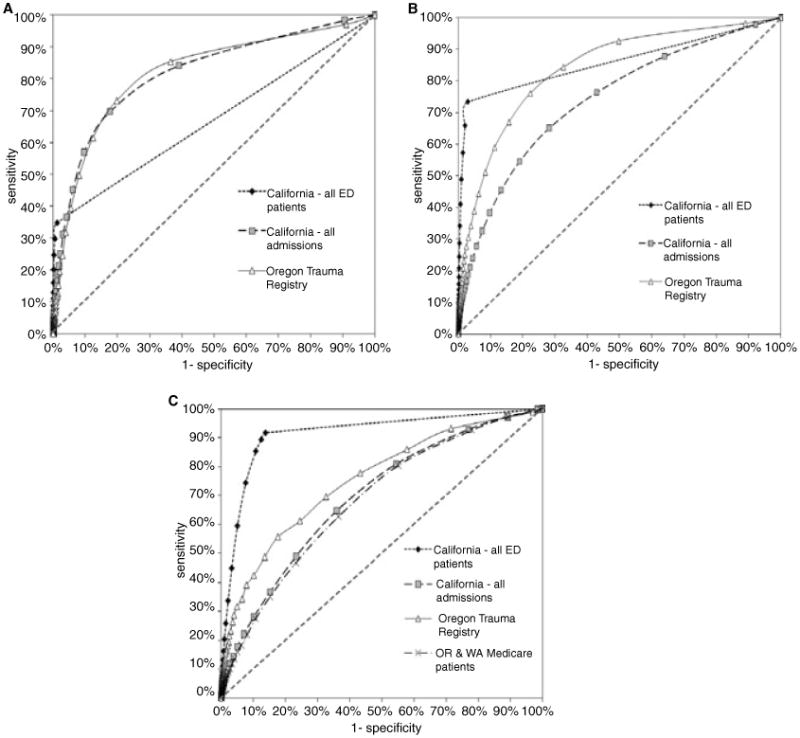Figure 2.

ROC curves for the discriminatory accuracy of hospital LOS to identify patients with serious injury or resource use, by age group. (A) ROC curves for overall LOS in children (0–14 years). ROC AUC for each of the data sets was 0.67 (California all-ED patients), 0.81 (California all admissions), and 0.82 (Oregon Trauma Registry). (B) ROC for overall LOS in adults (15–64 years). ROC AUC for each of the data sets was 0.86 (California all-ED patients), 0.74 (California all admissions), and 0.84 (Oregon Trauma Registry). (C) ROC for overall LOS in elders (≥65 years). ROC AUC for each of the data sets was 0.91 (California all-ED patients), 0.69 (California all admissions), 0.75 (Oregon Trauma Registry), and 0.68 (Medicare). The Medicare data set included patients ≥67 years. Serious injury was defined as ISS ≤ 16 (Oregon Trauma Registry) or ICISS ≤ 0.90 (California all-ED patients, California admitted patients, Medicare patients). Resource use was defined as any major surgery (brain or spine, neck, thoracic, abdominal, vascular), ventilation > 96 hours, or blood transfusion. AUC = area under the curve; ISS = Injury Severity Score; ICISS = ICD-9 Injury Severity Score; LOS = length of stay; ROC = receiver operating characteristic.
